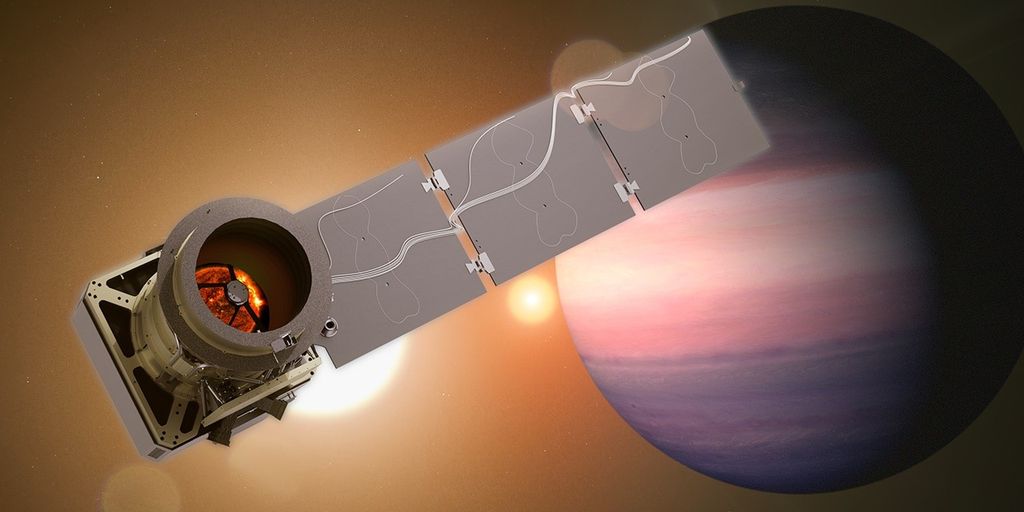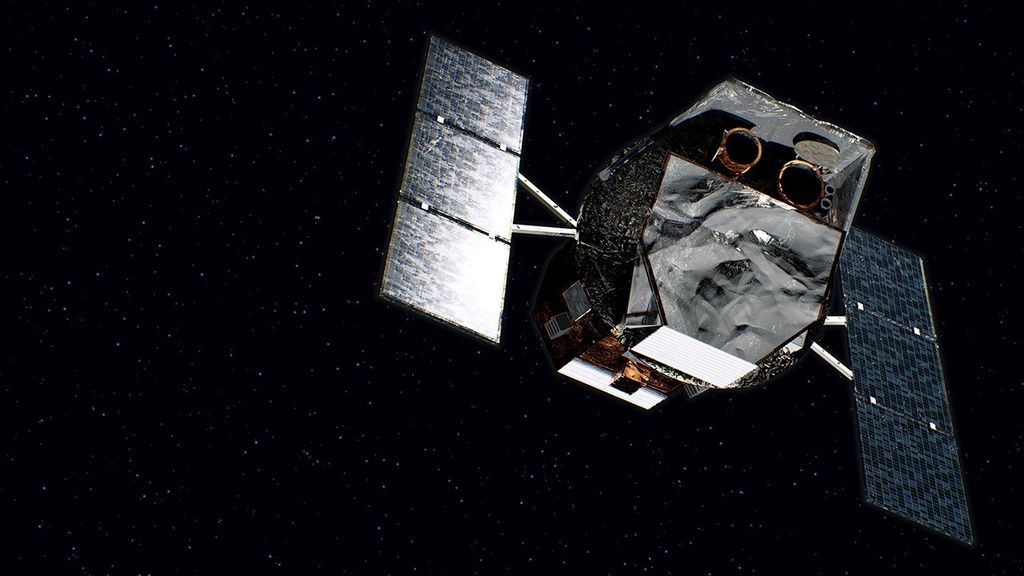1 min read
Stephan’s Quintet (MIRI IFU)
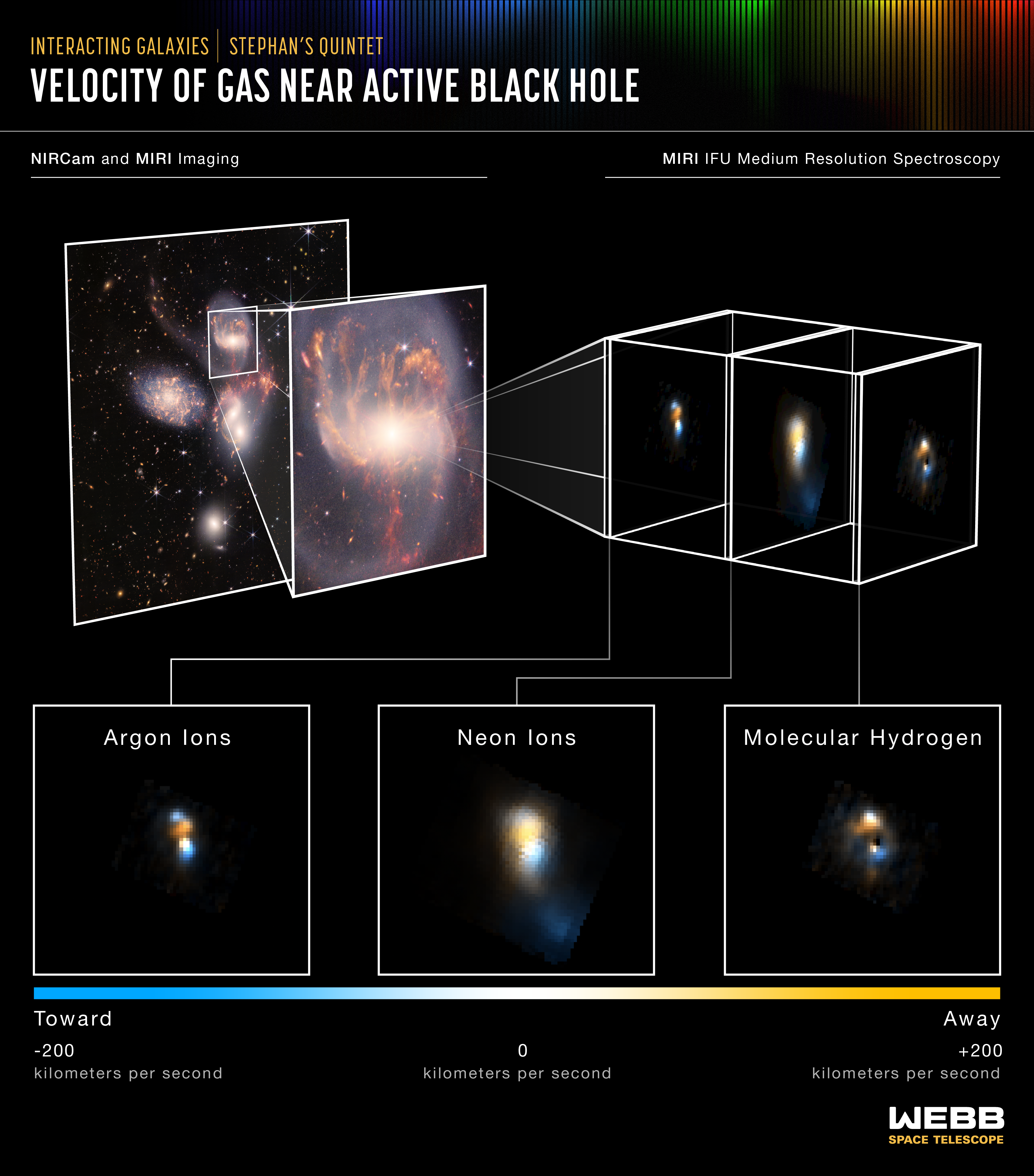
Stephan’s Quintet is a visual grouping of five galaxies located in the constellation Pegasus. Together, they are also known as the Hickson Compact Group 92 (HCG 92). Although called a “quintet,” only four of the galaxies are truly close together and caught up in a cosmic dance. The fifth and leftmost galaxy, called NGC 7320, is well in the foreground compared with the other four.
Tight groups like this may have been more common in the early universe when their superheated, infalling material may have fueled very energetic black holes called quasars. Even today, the topmost galaxy in the group – NGC 7319 – harbors an active galactic nucleus, a supermassive black hole 24 million times the mass of the Sun. It is actively accreting material and puts out light energy equivalent to 40 billion Suns.
Scientists using NASA’s James Webb Space Telescope studied the active galactic nucleus in great detail with the Medium-Resolution Spectrometer (MRS), which is part of the Mid-Infrared Instrument (MIRI). The spectrometer features integral field units (IFUs) – a combination of a camera and spectrograph. These IFUs provided the Webb team with a “data cube,” or collection of images of the galactic core’s spectral features.
Using IFUs, scientists can measure spatial structures, determine the velocity of those structures, and get a full range of spectral data. Much like medical magnetic resonance imaging (MRI), the IFUs allow scientists to “slice and dice” the information into many images for detailed study.
MIRI’s MRS pierced through the shroud of dust near the active galactic nucleus to measure the bright emission from hot gas being ionized by powerful winds and radiation from the black hole. The instrument saw the gas near the supermassive black hole in wavelengths never studied before in so much detail, and it was able to determine its velocity.
Some of these key emission features are shown in this image. In each case, the blue-colored regions indicate movement toward the viewer and orange-colored regions represent movement away from the viewer. The argon and neon lines are from hot spots of super-heated gas that is highly ionized by the powerful radiation and winds from the supermassive black hole. The molecular hydrogen line is from colder dense gas in the central regions of the galaxy and entrained in the outflowing wind. The velocities are measured by shifts in the wavelengths of a given emission line feature.
MIRI was contributed by ESA and NASA, with the instrument designed and built by a consortium of nationally funded European Institutes (The MIRI European Consortium) in partnership with JPL and the University of Arizona.
For a full array of Webb’s first images and spectra, including downloadable files, please visit: https://webbtelescope.org/news/first-images
Extended Description and Image Alt Text
Extended Description
Infographic titled “Interacting Galaxies Stephan’s Quintet: Velocity of Gas Near Active Black Hole; NIRCam and MIRI Imaging and MIRI IFU Medium Resolution Spectroscopy.”
The infographic shows a color image of a group of galaxies and a zoom-in color image to one of those galaxies for reference and three separate two-color images of a small portion of the center of the zoomed-in galaxy. Each image is actually a map that shows the velocity of a particular ion or molecule in the gas at different points near the center of the galaxy.
Top Left: Reference Images
An oblique view of a NIRCam/MIRI composite image shows a group of galaxies of different shapes on a background of numerous smaller (more distant) galaxies. The galaxy at the top is outlined and a zoom-in of the outlined galaxy is pulled-out. The pull-out zoom shows a bright central core with orange spiral arms.
Top Right: Horizontal Stack of Two-Color Maps
An oblique view of a rectangular prism is pulled out of the center of the galaxy shown in the zoom. The prism is made of three separate rectangular two-color (blue and yellow) maps outlined in white, stacked one in front of the other.
Bottom: Maps with Color Scale Bar
The same three rectangular two-colored maps are arranged side-by-side along the bottom. The view of each image is face on rather than oblique. There is a line connecting each to its corresponding map in the stack on the upper right. Each map is labeled with the ion or molecule shown. From left to right: Argon Ions; Neon Ions; and Molecular Hydrogen.
Below the three maps is a horizontal scale bar showing the velocity that each color on the maps represents. The scale bar has a color gradation from blue on the far left to white in the middle to orange-yellow on the far right. The blue (left) end of the scale bar is labeled “negative 200 kilometers per second” and “toward.” The orange-yellow (right) end of the scale bar is labeled “plus 200 kilometers per second” and “away.” The white part (middle) of the scale bar is labeled “0 kilometers per second.”
Map Descriptions
Each map shows an irregular form with fairly distinct regions of different colors.
The velocity map of argon ions on the left shows a small orange-yellow blob (gas moving away from us) in the center with a small blue blob (gas moving toward us) just above, a white blob (gas not moving toward or away from us) below, and another blue blob (gas moving toward us) below that.
The velocity map of neon ions in the middle shows a larger and more diffuse orange-yellow blob (gas moving away from us) in the center with some white (gas not moving toward or away from us) just above and below, and a region of blue (gas moving toward us) below that.
The velocity map of molecular hydrogen on the right shows a small orange-yellow blob (gas moving away from us) in the center with some white (gas not moving toward or away from us) just above, a another blue blob (gas moving toward us) below, and a tiny orange blob (gas moving away from us) below that.
Image Alt Text
Infographic showing the velocity of different gases at different points near a black hole.
About the Object
- R.A. PositionR.A. PositionRight ascension – analogous to longitude – is one component of an object's position.22:35:57.49
- Dec. PositionDec. PositionDeclination – analogous to latitude – is one component of an object's position.33:57:36.0
- ConstellationConstellationOne of 88 recognized regions of the celestial sphere in which the object appears.Pegasus
- DistanceDistanceThe physical distance from Earth to the astronomical object. Distances within our solar system are usually measured in Astronomical Units (AU). Distances between stars are usually measured in light-years. Interstellar distances can also be measured in parsecs.290 million light-years (89 million parsecs)
About the Data
- Data DescriptionData DescriptionProposal: A description of the observations, their scientific justification, and the links to the data available in the science archive.
Science Team: The astronomers who planned the observations and analyzed the data. "PI" refers to the Principal Investigator.This image was created with Webb data from proposal 2732. It is part of Webb Early Release Observations.
The Early Release Observations and associated materials were developed, executed, and compiled by the ERO production team:
Jaclyn Barrientes, Claire Blome, Hannah Braun, Matthew Brown, Margaret Carruthers, Dan Coe, Joseph DePasquale, Nestor Espinoza, Macarena Garcia Marin, Karl Gordon, Alaina Henry, Leah Hustak, Andi James, Ann Jenkins, Anton Koekemoer, Stephanie LaMassa, David Law, Alexandra Lockwood, Amaya Moro-Martin, Susan Mullally, Alyssa Pagan, Dani Player, Klaus Pontoppidan, Charles Proffitt, Christine Pulliam, Leah Ramsay, Swara Ravindranath, Neill Reid, Massimo Robberto, Elena Sabbi, Leonardo Ubeda.
The EROs were also made possible by the foundational efforts and support from the JWST instruments, STScI planning and scheduling, Data Management teams, and Office of Public Outreach.
- InstrumentInstrumentThe science instrument used to produce the data.NIRCam, MIRI
- Object NameObject NameA name or catalog number that astronomers use to identify an astronomical object.Stephan’s Quintet, Hickson Compact Group (HCG) 92
- Object DescriptionObject DescriptionThe type of astronomical object.Interacting Galaxy Group
- Release DateJuly 12, 2022
- Science ReleaseNASA’s Webb Sheds Light on Galaxy Evolution, Black Holes
- CreditImage: NASA, ESA, CSA, STScI
Related Images & Videos
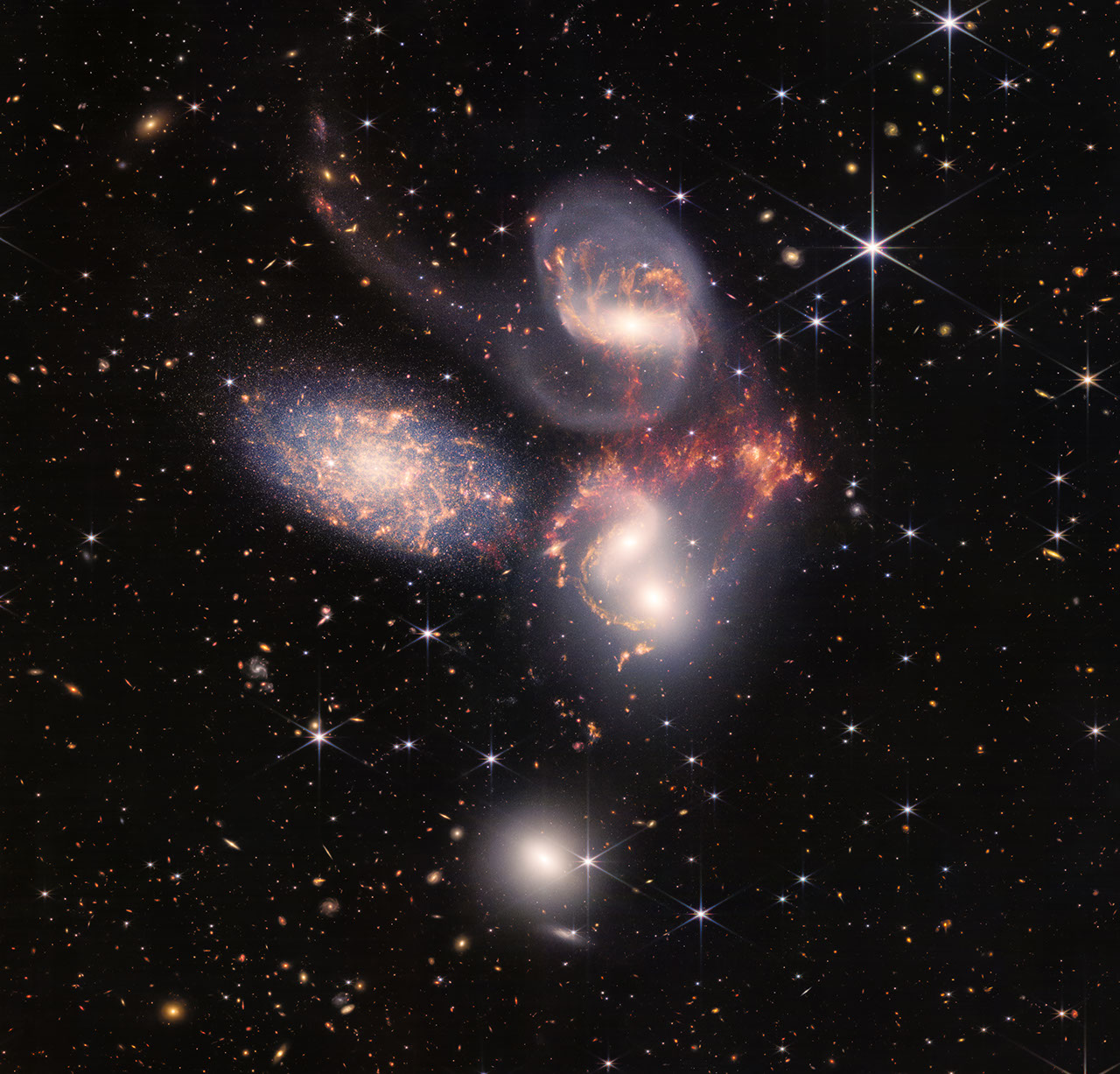
Stephan's Quintet (NIRCam and MIRI Composite Image)
An enormous mosaic of Stephan’s Quintet is the largest image to date from NASA’s James Webb Space Telescope, covering about one-fifth of the Moon’s diameter. It contains over 150 million pixels and is constructed from almost 1,000 separate image files. The visual grouping of...
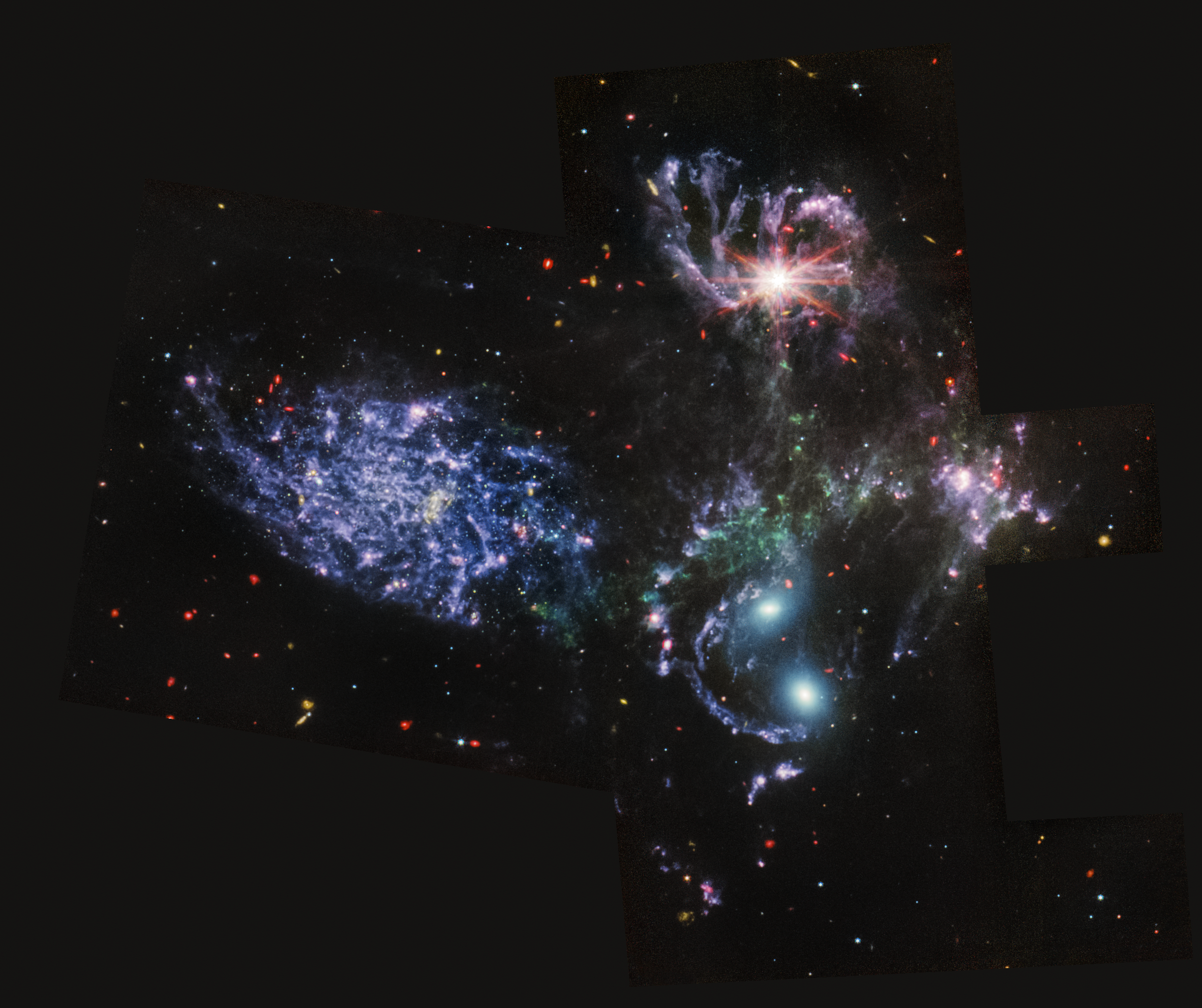
Stephan's Quintet (MIRI Image)
With its powerful, mid-infrared vision, the Mid-Infrared Instrument (MIRI) shows never-before-seen details of Stephan’s Quintet, a visual grouping of five galaxies. MIRI pierced through dust-enshrouded regions to reveal huge shock waves and tidal tails, gas and stars stripped...
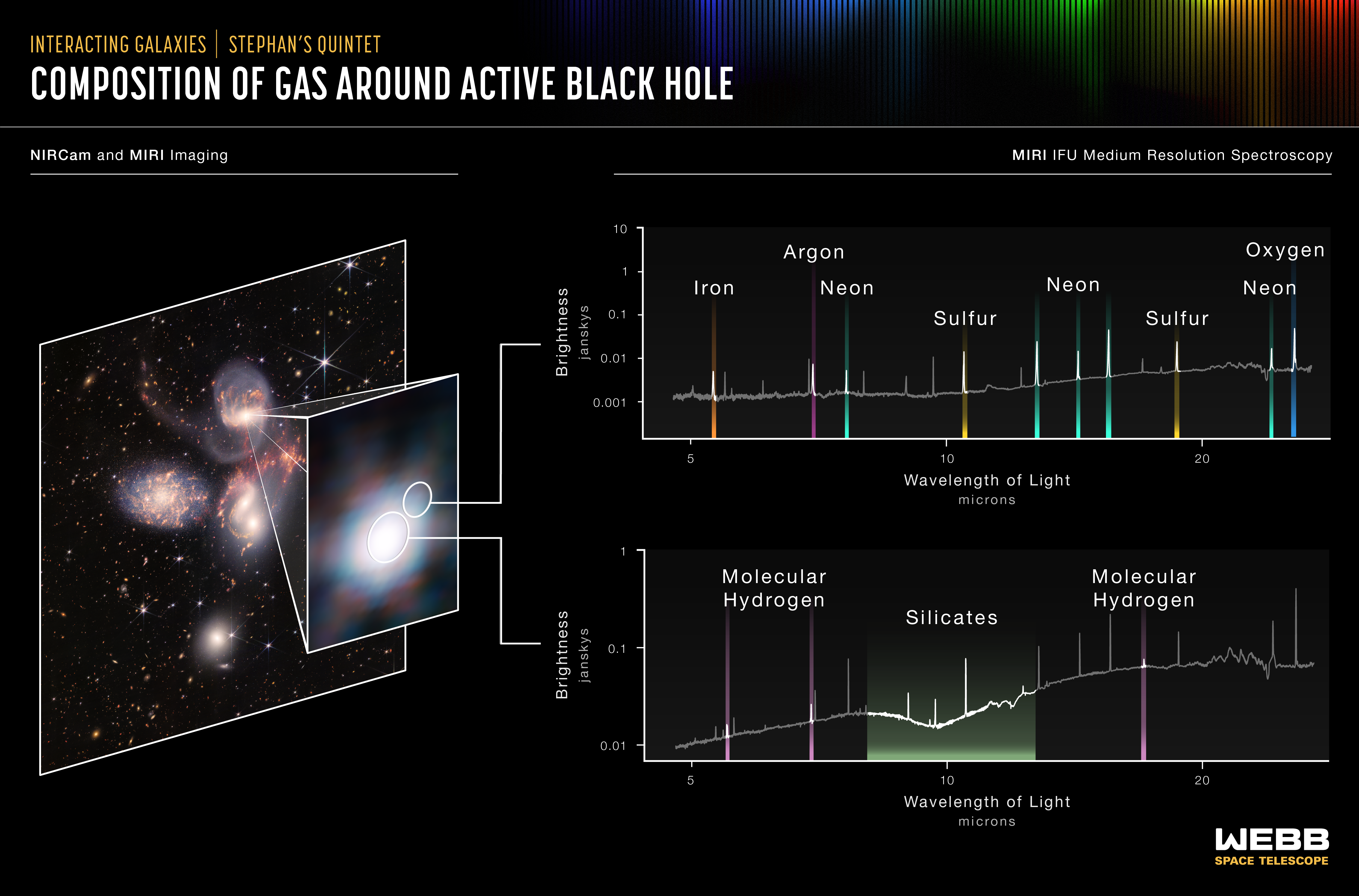
Stephan's Quintet (MIRI Spectra)
Stephan’s Quintet is a visual grouping of five galaxies located in the constellation Pegasus. Together, they are also known as the Hickson Compact Group 92 (HCG 92). Although called a “quintet,” only four of the galaxies are truly close together and caught up in a cosmic dance....
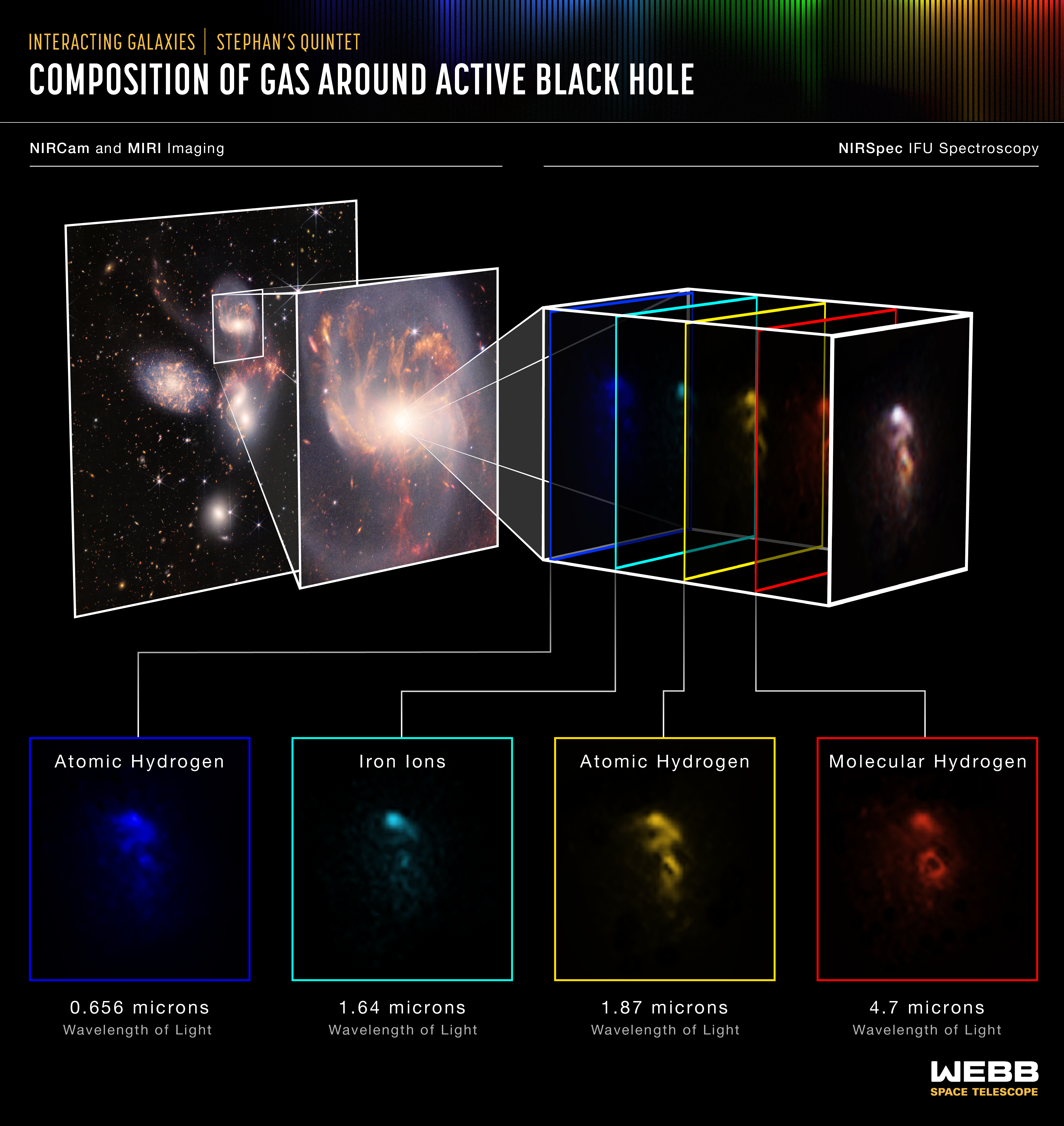
Stephan's Quintet (NIRSpec IFU)
Stephan’s Quintet is a visual grouping of five galaxies located in the constellation Pegasus. Together, they are also known as the Hickson Compact Group 92 (HCG 92). Although called a “quintet,” only four of the galaxies are truly close together and caught up in a cosmic dance....
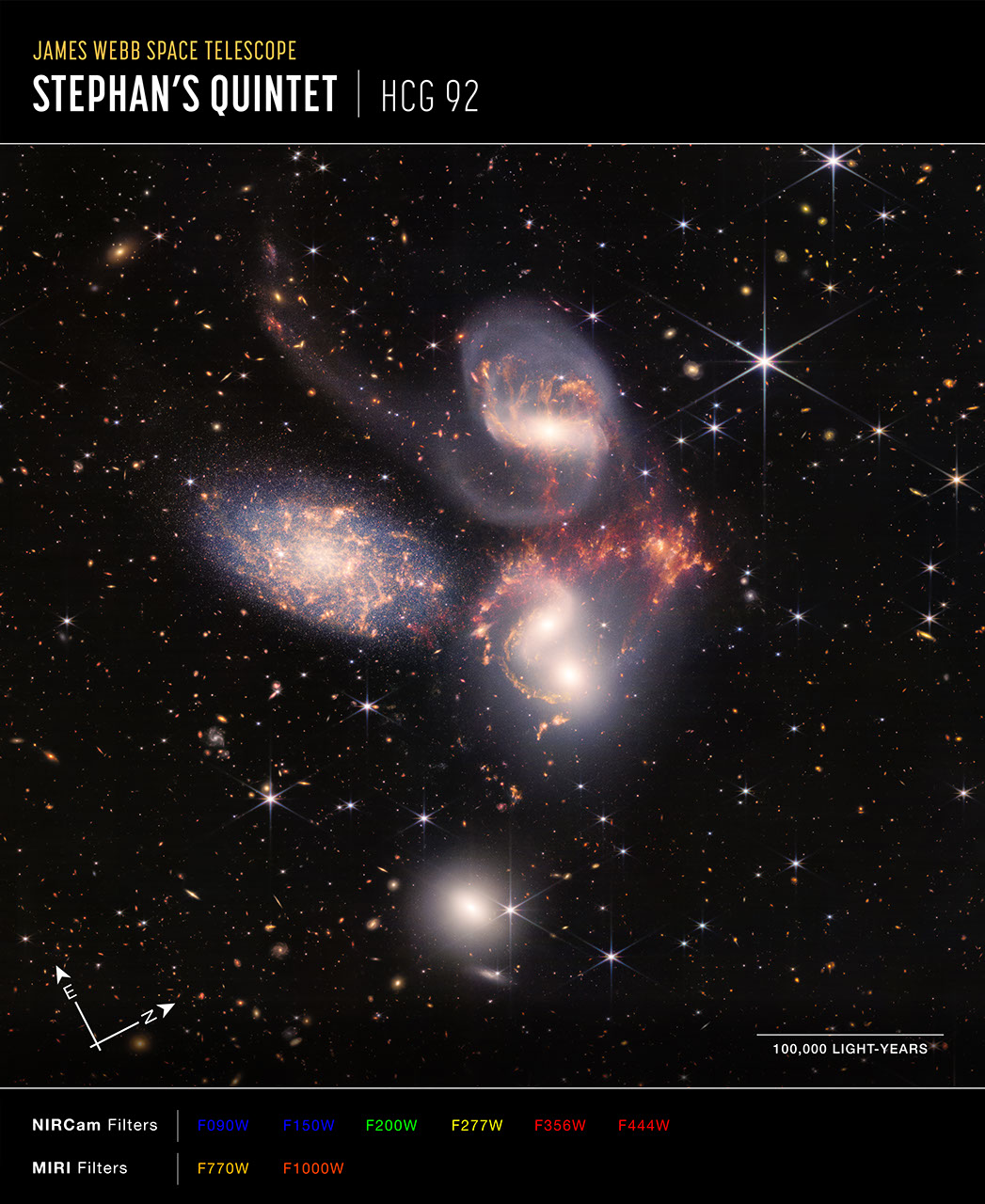
Stephan's Quintet (NIRCam and MIRI Composite Compass Image)
Image of Stephan's Quintet, HCG 92, captured by Webb’s Near-Infrared Camera (NIRCam) and Mid-Infrared Instrument (MIRI), with compass arrows, scale bar, and color key for reference. The north and east compass arrows show the orientation of the image on the sky. Note that the...
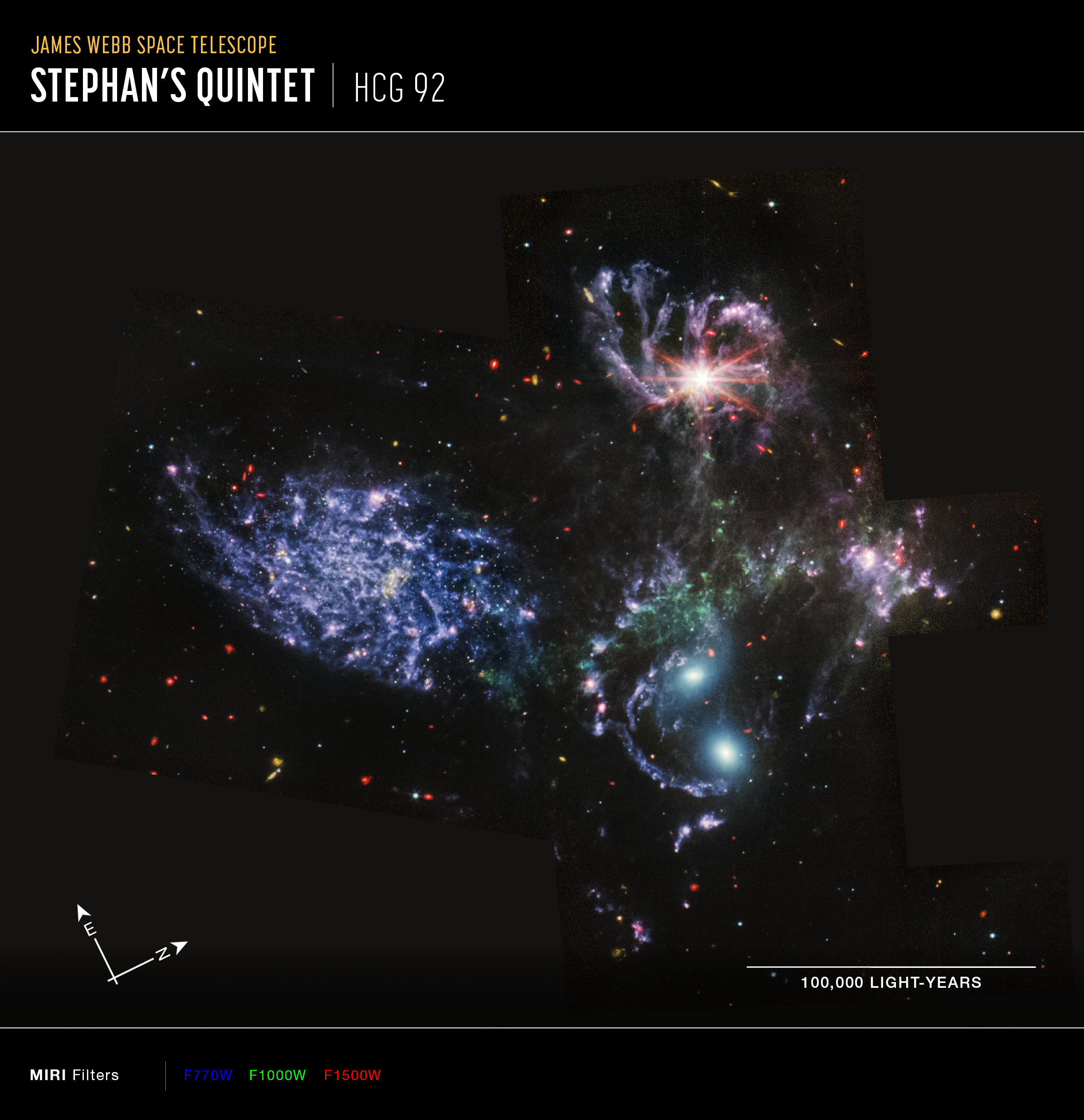
Stephan's Quintet (MIRI Compass Image)
Image of Stephan's Quintet, HCG 92, captured by Webb’s Mid-Infrared Instrument (MIRI), with compass arrows, scale bar, and color key for reference. The north and east compass arrows show the orientation of the image on the sky. Note that the relationship between north and east...
Share
Details
Laura Betz
NASA’s Goddard Space Flight Center
Greenbelt, Maryland
laura.e.betz@nasa.gov
NASA, ESA, CSA, STScI




